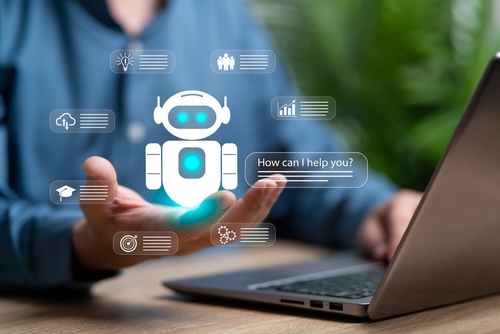Sales and marketing leaders are mandated to deliver more leads, deals and revenue with fewer resources. Many are leveraging agentic AI – digital coworkers designed to streamline campaign execution and reporting. But despite the hype, most implementations fall short of generating measurable results.
Gartner warns that more than 40% of agentic AI projects will be scrapped by the end of 2027, citing escalating costs, unclear business strategies and inadequate risk controls. For sales and marketing teams, that means wasted budgets and missed opportunities to grow revenue.
What explains this reality? Agentic AI isn’t failing because it’s overhyped or flawed technology, but because it’s deployed without ownership and integration into workflows. Without accountability frameworks tied to campaign performance and customer outcomes, this engine of potential growth remains stuck in neutral.
Why AI Agents Fail in Sales and Marketing
The first wave of deployments has exposed a pattern: too many companies treat agents as apps, not teammates. Agents are installed, integrated into a CRM or campaign tool, and expected to run on autopilot. But unlike static apps, agents are probabilistic and dynamic – they need feedback, guardrails and continuous improvement. Absent this, failure rates skyrocket.
Another mistake is overreach. Under pressure to deliver quick results, companies try to replace sales and marketing functions and workflows instead of focusing on target use cases such as automating lead scoring, campaign reporting or pipeline forecasting. These applications build trust and deliver measurable outcomes more quickly.
Siloed innovation amplifies the problem. When marketing builds agents without connecting to sales teams, or vice versa, adoption stalls and results fall short. According to McKinsey, AI initiatives can’t succeed with isolated, specialized AI teams. The same applies here. Successful agentic AI requires cross-functional delivery models with sales, marketing and operations working together to achieve the same larger goals.
Finally, ownership of outcomes is often missing. Many vendors deliver agents and then walk away without clear accountability for revenue impact, leaving marketing and sales teams with agents that underperform. Agents are not one-time installs and require monitoring, adjustment and alignment with revenue goals.
The Missing Ingredient: Human Oversight
Sales and marketing success with AI agents depends on augmentation, not replacement. Humans are needed to provide judgement, context and relationship building. AI agents excel at speed, scale and execution of repetitive tasks. Combined, human and agentic intelligence create an optimal growth lever.
Consider media planning. A single campaign involves hundreds of discrete tasks, from segmentation and targeting to reporting and optimization. Agents can automate as much as 70% of these steps, but humans still need to approve creative direction, reconcile budgets and get clients’ sign off. This hybrid model reduces manual work, accelerates time-to-market, and ensures brand strategy is aligned with client expectations.
By reframing agents as teammates rather than tools, sales and marketing teams can increase efficiency and adopt a GrowthOps mindset where accountability, context and augmentation drive outcomes.
Growing with Confidence: Elastic Scaling
Sales and marketing workloads constantly fluctuate – from seasonal campaigns, product launches and end-of-quarter pushes. Hiring and downsizing staff to match these cycles is inefficient. Agentic AI introduces a different paradigm: elastic scaling. Much like cloud infrastructure, agents can be scaled up during peak demand and scaled down during slower periods without sacrificing core staff or agility.
Retail marketers, for example, can scale up agents during holiday campaigns to manage customer service queries and optimize media buys, then dial back once demand wanes. Sales teams can use agents to boost leads during conference season and scale down when leads stabilize. This elasticity ensures teams can stay agile without burning out or wasting budget.
4 Key Takeaways for Sales & Marketing Leaders
What does this all mean for sales and marketing leaders planning agentic AI strategies in 2026? Four lessons stand out:
- Don’t buy agents as apps. Resist treating agentic AI as plug-and-play software. Design blended accountability systems where humans and agents share responsibility for outcomes. For sales and marketing, that means integrating agents directly into CRM workflows, campaign management platforms and customer engagement processes so they’re embedded in daily revenue operations.
- Favor augmentation over replacement. Use agents to automate campaign execution and reporting. Keep humans in charge of client strategy, relationship management, and final approvals. Think of agents as “junior teammates” who handle repetitive tasks, giving your sales and marketing teams more time for strategic conversations and creative work.
- Treat scale as a utility. Similar to how cloud computing made infrastructure elastic, agentic AI can flex sales and marketing capacity up or down depending on demand, without growing headcount. When market conditions shift suddenly like demand spikes after a product launch or slowdowns in economic uncertainty, agents provide a buffer, keeping campaigns and customer engagement consistent even when human teams are stretched.
- Focus on operations, not just products. Most AI teams in enterprises today are fixated on building new product features, but the biggest competitive gap lies in applying AI to operational, data and process execution. Judge agents on how they impact lead generation, conversion rates, pipeline velocity, and customer satisfaction. To prove real business value, tie every AI initiative to specific KPIs such as faster lead response times, higher campaign ROI, or improved client Net Promoter Score (NPS).
The Beginning of a Beautiful Friendship
Agentic AI has reached its hype cycle peak, and the market is getting crowded with vendors who just develop AI agents for companies, turn them over, and say good luck. The hard truth is this: most agents will continue to fail unless companies design for context, accountability and augmentation. The real future of agentic AI isn’t about autonomous machines replacing humans; it’s about agentic-assisted humans with true ownership of outcomes. This is what the market is calling Services-as-a-Software (SaaS), and is the foundation of a new GrowthOps model that will define tomorrow’s sales and marketing leaders.





